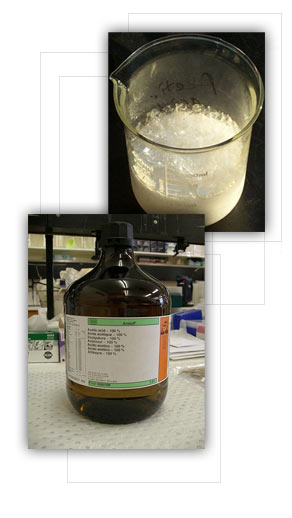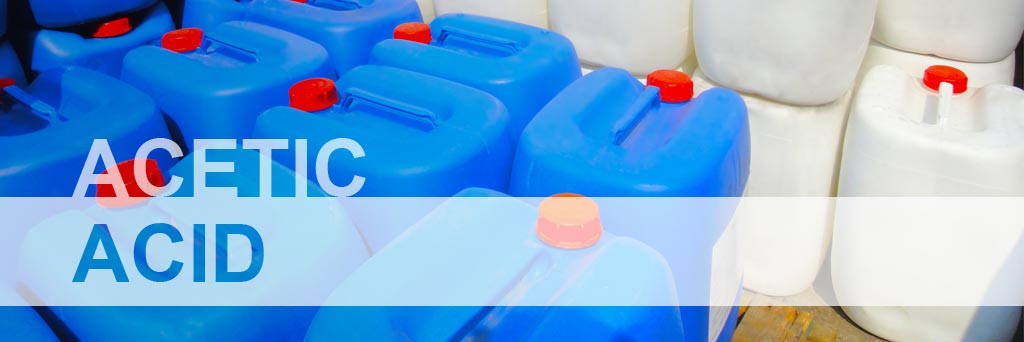| |
Acetic Acid (Ethanoic Acid, CH3COOH) is an organic acid that gives vinegar its sour taste and pungent smell. It is a weak acid, in that it is only a partially dissociated acid in an aqueous solution. Pure, water-free acetic acid (glacial acetic acid) is a colourless liquid that absorbs water from the environment (hygroscopy), and freezes at 16.5 °C (62 °F) to a colourless crystalline solid. The pure acid and its concentrated solutions are very corrosive.
Acetic Acid is one of the simplest carboxylic acids. It is an important chemical reagent and industrial chemical, used in the production of polyethylene terephthalate mainly used in soft drink bottles; cellulose acetate, mainly for photographic film; and polyvinyl acetate for wood glue, as well as synthetic fibres and fabrics. In households, diluted acetic acid is often used in descaling agents. In the food industry, acetic acid is used under the food additive code E260 as an acidity regulator and as a condiment.
Concentrated Acetic acid is corrosive and must, therefore, be handled with appropriate care, since it can cause skin burns, permanent eye damage, and irritation to the mucous membranes. These burns or blisters may not appear until hours after exposure. Latex gloves offer no protection, so specially resistant gloves, such as those made of nitrile rubber, are worn when handling the compound. Concentrated acetic acid can be ignited with difficulty in the laboratory. It becomes a flammable risk if the ambient temperature exceeds 39 °C (102 °F), and can form explosive mixtures with air above this temperature (explosive limits: 5.4–16%).
|
 |



